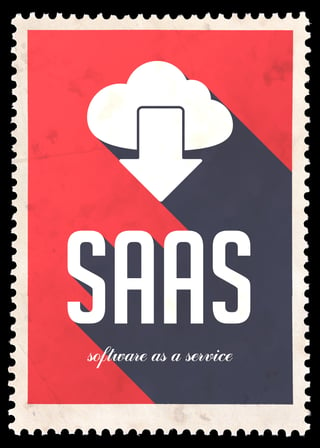
As technology evolves, so do business models. In 2016, 64 percent of SMBs were using cloud-based apps, and the cloud adoption rate has exploded.
According to data compiled by Impact Networking, spending on public cloud increased by 54% between 2020-2022 accelerated in part by global Covid-19 conditions.
In recent years, Business owners have turned to the Software as a Service (SaaS) licensing and delivery model for solutions that help keep them competitive while also offering better services.
Insights from IDG’s Enterprise Cloud Computing Survey confirm that cloud-hosted software solutions have become the new standard. More than half (55%) of organizations currently use multiple public clouds, with 21% saying they use three or more.
Let’s explore five reasons why SaaS makes sense for SMBs to understand the high adoption rates of this progressive software model.
1. Fast and Painless Adoption
Research data from McKinsey & Company 45% of businesses and IT executives found that their digital transformation and software development projects delivered far less in the way of profits that had been initially expected. According to the findings, survey respondents lamented both a lack of clear priorities coupled with a lack of investment as key factors in those outcomes. Using a SaaS model makes selecting and deploying a business application painless because it solves the questions of integration, which must be acknowledged to avoid the disruption of critical processes and the subsequent downtime.
The often endless back and forth between stakeholders and developers can be avoided entirely because it’s the responsibility of the selected SaaS vendor to meet the gathered requirements of the business.
2. Low Costs
Moore's law tells us that the number of transistors in an integrated circuit doubles approximately every two years. In other words, computers improve at an exponential rate. The flip side of this is that existing hardware becomes obsolete extremely quickly.
For most small and midsize businesses, the upfront cost of hardware acquisition and maintenance of on-premise systems is much higher compared to the cost of a cloud-based setup. The SaaS licensing model also provides a predictable cost structure for businesses with tight IT budgets.
3. Hassle-Free Maintenance
The obvious advantage of running applications on someone else’s hardware is the absence of hardware maintenance and repairs. A business can perform best when it maintains a sharp focus. SaaS providers have access to a much larger workforce than most businesses, meaning they can solve problems much quicker and guarantee excellent uptimes. Virtually all respectable SaaS providers include data backup and restoration as part of their services, protecting you against common user errors and natural disasters.
4. Access to the Latest Features
SaaS applications seamlessly receive new updates with negligible disruption to the operation of a business. This leads to improved security, higher productivity, and greater employee satisfaction. Equipped with cutting-edge tools, businesses can take on new challenges and complete all objectives.
5. Infinite Scalability
SaaS applications usually reside in infinitely scalable cloud environments. As businesses grow, their applications can grow with them and not hold them back. With on-premise software, businesses either must plan ahead and invest in an infrastructure that they may not need for several years or incrementally upgrade their hardware as they grow larger and become more profitable.
Conclusion
Cloud-based business applications have a number of advantages over on-premise software deployments, including faster adoption, low costs, simpler maintenance, instant access to the latest features, infinite scalability, and others. Over the next few years, the adoption rate of cloud-based applications is expected to increase significantly as even more businesses discover their advantages.
Related Articles: Data Security Considerations for Cloud-Based Legal Applications
